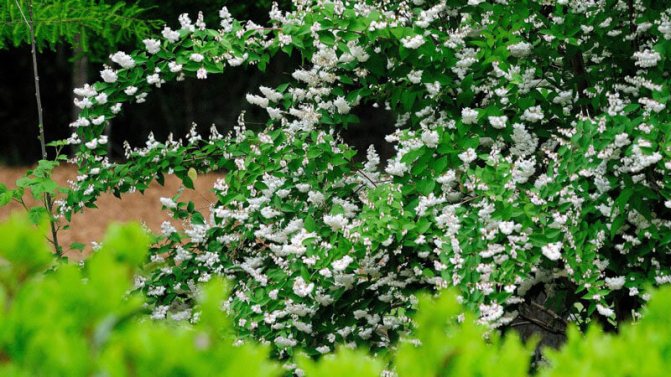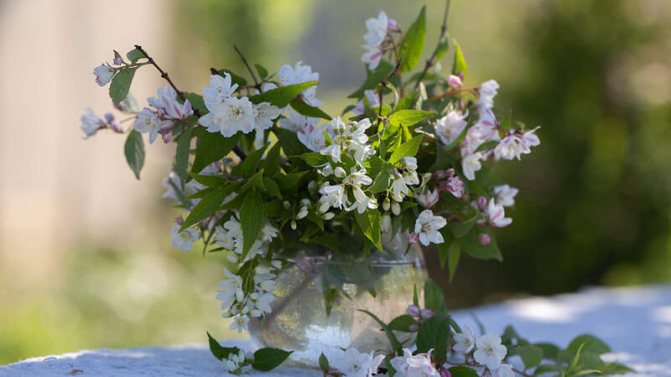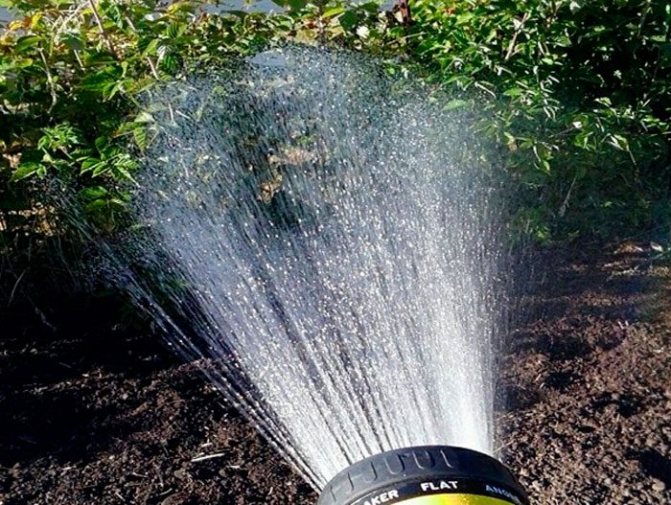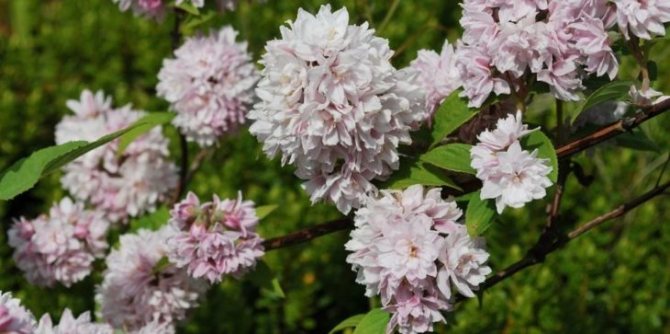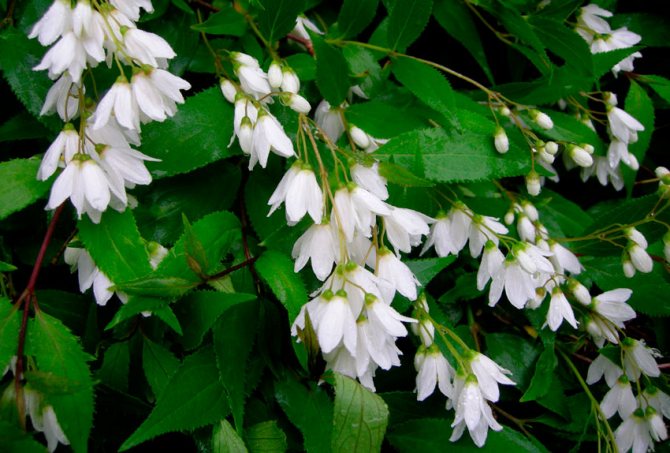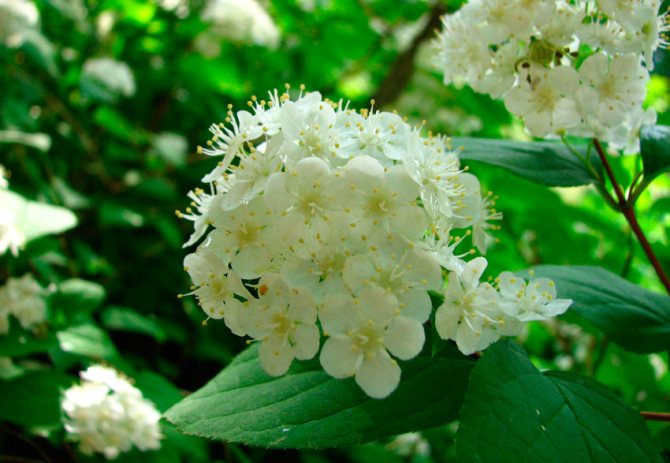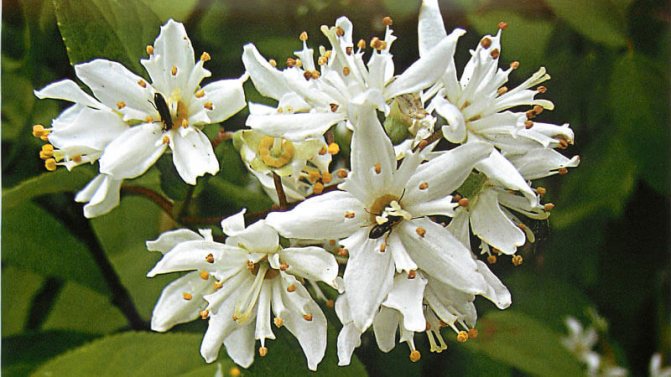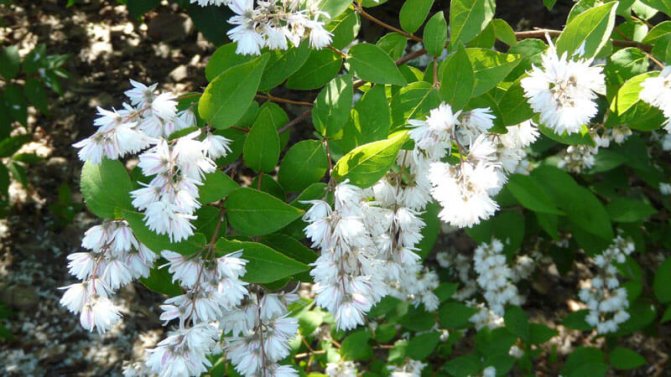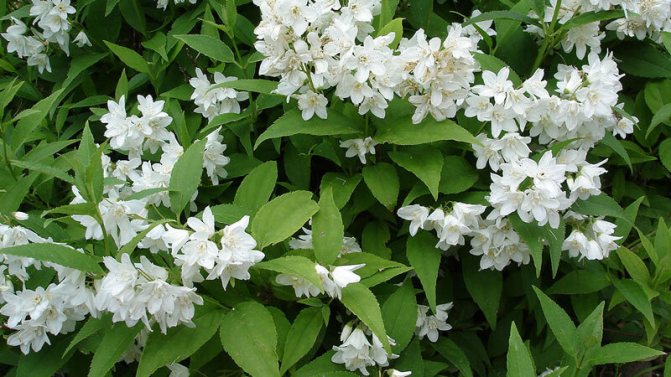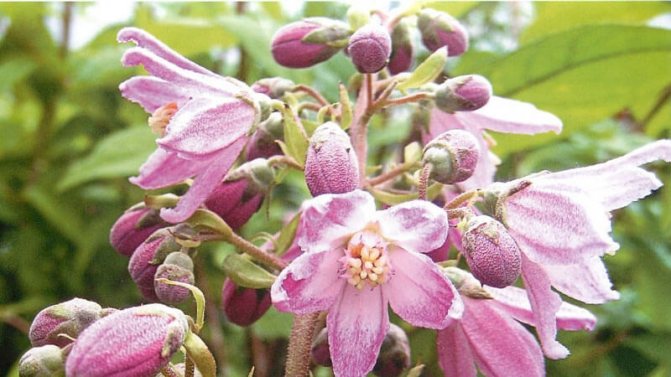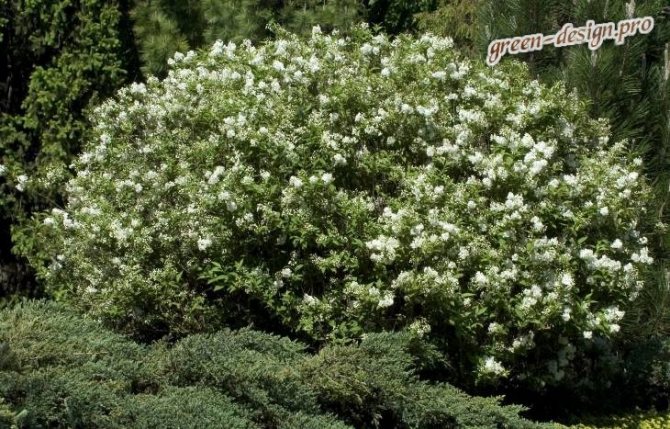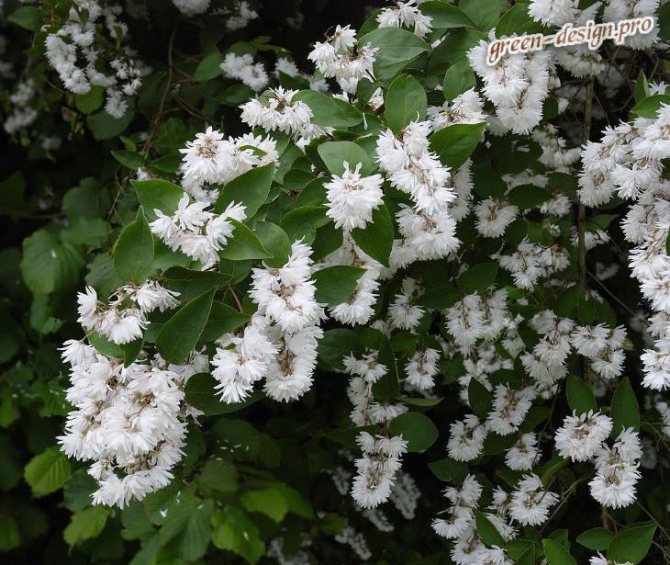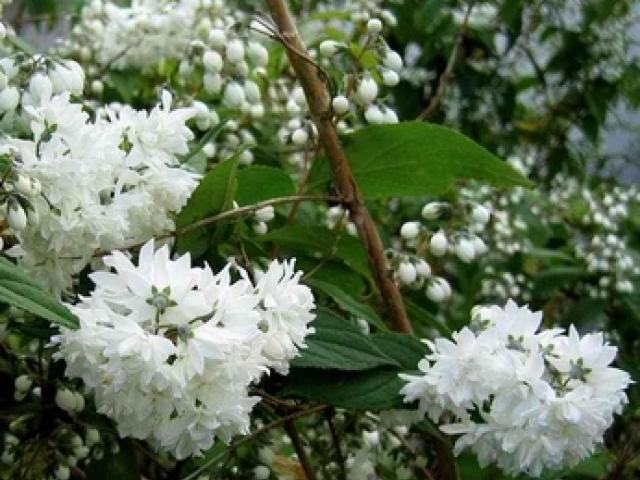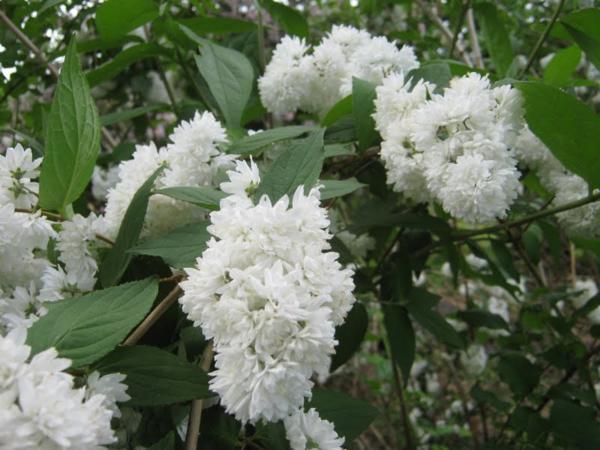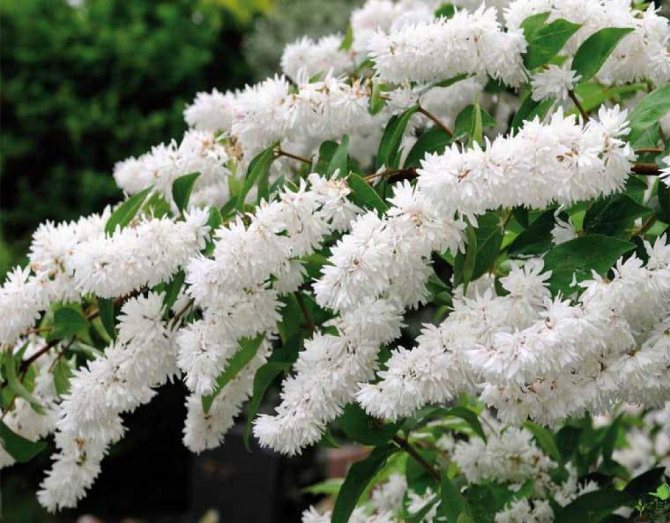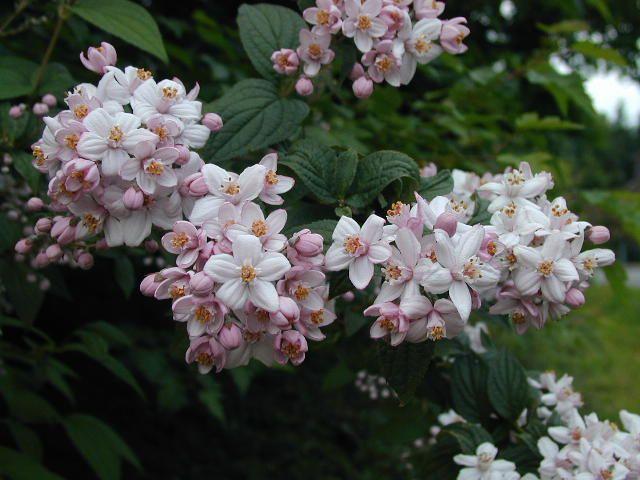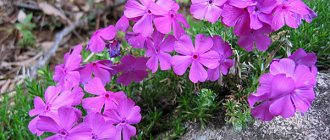Among the decorative flowering deciduous shrubs, the wonderful action from the Hortensiev family deserves special attention. The homeland of culture is East and Central Asia, and the greatest species diversity is found in China.
The name of the genus is given in honor of the Dutch philanthropist and patron of botany of the 18th century Johann van der Deutz.
Of several dozen species, only a few have found recognition among gardeners, but the creation of hybrids and numerous spectacular varieties has made the shrub a popular inhabitant of gardens and parks.
Along with the high decorative effect, maintenance is not demanding, and planting in the open field is not difficult.
What does a deytion shrub look like
The genus Deutzia of the family Hortensiae consists of 72 species of deciduous or evergreen shrubs with a spreading or erect crown, reaching a height of 50 cm to 4 m. The leaves are simple, arranged opposite along the pagon.
The main distinguishing feature of the plants is their lush and long flowering, which begins at the end of May and lasts almost all of June.
The flowers of the action are graceful, in some cultivars they are bell-shaped, like lily of the valley, - snow-white, pale pink or lilac-purple, grouped in a few lateral or apical inflorescences.
Unfortunately, almost devoid of flavor. Fruits are small, almost spherical capsules.
How to take care of the action
You need to plant the plant in an open area so that it has enough sunlight. At the same time, you need to pick up an area where there is no sun, otherwise the plant may wither. Each bush is planted at a distance of up to 3 meters from each other.
This will help the plant to develop normally and not shade each other in the future. Beautiful and even compositions look better than chaotic bushes. Standard soil in many regions is acidic. Deytsia does not like such soil very much, it will grow weakly and with rare shoots.
The situation can be corrected by putting 300 grams of lime in each hole. For the same purpose, you can use wood ash, the dose is exactly 200 grams. To plant a plant, a hole is dug about 50 cm, humus (2 parts), peat (1 part) and sand (2 parts) must be put there.
Make sure that the root system does not show more than half a centimeter above the surface. Otherwise, the bush may not be accepted. If you examine the root system of the plant, you will see that it consists of two large roots and hundreds of small ones.
Large roots go deep into the soil and provide stability and growth of the shrub, while hundreds of small ones are responsible for supplying nutrients and moisture. This root system enables the plant to survive when transplanted.
The groundwater level at the site should not be high. If there is a lot of water, up to 15 cm of sand is placed at the bottom of each hole before planting a bush. It serves as a drainage layer and greatly simplifies the care of young plants.
The action will bloom for a long time and profusely if it is fed in the spring. Mineral fertilizers can be purchased at any garden or flower shop. Used as a natural fertilizer manure, which is diluted with water in a clear proportion. Take 1 part manure and 10 parts water, stir well.
Each bush will need up to 6 liters of this fertilizer.But, do not violate the proportion, this will lead to burns of the root system and Deytia will dry out. The shrub is not picky about watering. He doesn't like a lot of water, but he needs to water it several times a month.
An adult shrub should receive 20 liters of water per month, provided that the summer is standard. The dose is divided into 2 waterings. If your region has a dry summer with high temperatures, the dose of liquid increases to 40 liters per month. Under each bush, the soil is loosened to a depth of about 30 cm. You also need to get rid of weeds in time.
Pruning Deutzia in the spring will help shape the bush. Also, shoots that are frozen in winter, become dry, or grow in the wrong place are cut off. Pruning shoots rejuvenates the plant and makes it flexible. But, do not get too carried away with this event.
Despite the fact that Deytsia is able to survive frost, it must be protected from the cold. The bottom line is that flowers are not formed on young shoots, but on those that are one year old. They need to be protected from frost, otherwise the shrub will not bloom.
How you cover your plant for the winter depends on the climate in your area. If there is a lot of snow, the branches of the bush are bent to the ground and covered with a lot of snow. Until spring, the plant will not freeze.
For those regions where there is not much snow, a special frame can be used. It is placed right above the bush and filled with leaves, branches of Christmas trees and other materials at hand. From above, the frame is covered with a layer of heat-insulating material. This will protect the bush from precipitation and dramatic changes in temperature.
The above method is suitable for bushes, shoots that did not have time to stiffen. The plant bends and bends well. An adult plant with a height of 1 meter will no longer bend. As a result, the shoots can be broken.
For large shrubs, there is another way to get through the winter. The bush is tied with ropes and covered with a layer of warm material. Choose materials that do not allow air to pass through, otherwise the shoots will rot during the winter under the temperature drop. In general, it is not difficult to care for the shrub.
Action graceful photo
Deutzia graceful is distinguished by its small size: from 0.5 to 1.2 m in height, neat bush shape and early, abundant flowering. Unlike other types of shrubs, the graceful deytion blooms in the second year after planting. Its snow-white flowers are collected in graceful tassels, each of which has from 40 to 50 flowers. A sort of small bouquets against the background of oblong-lanceolate light green leaves.
The graceful action is successfully used for the decoration of borders and tamping of the front part of the group planting of tall plants.
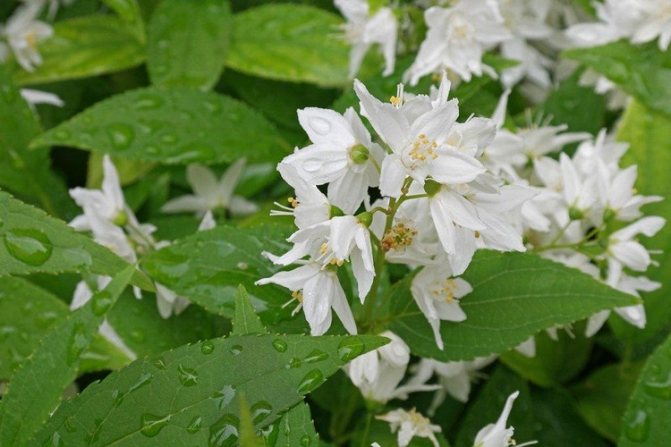
Photo and description of the action
Deciduous, rarely evergreen shrub from 1 to 3 meters in height with tough, branched shoots. The leaves are green, ovoid, often covered with delicate hairs.
Conditions for planting rose seedlings in open ground with a photo
Action refers to horticultural crops that are invisible for most of the year and only in late spring - in early summer during flowering, you can see its beauty. The shrub is covered with hundreds of white, reddish or pink flowers that make it a magnificent flower fountain.
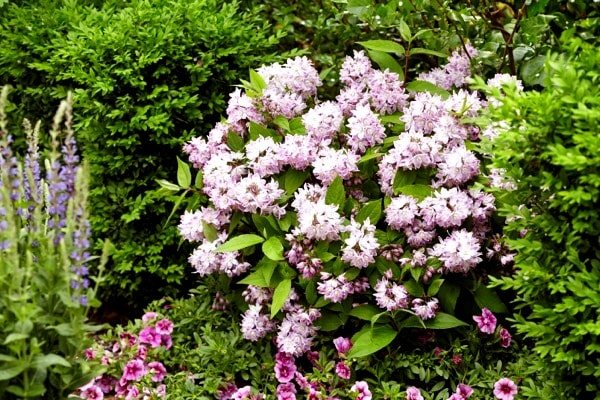

Numerous bell-shaped or star-shaped flowers that form on the tops of last year's shoots are collected in loose panicles, the length of which depends on the variety.
After flowering, the shrub is commonly used as a green background for flower arrangements. The life span of a culture is approximately 25 years.
Action purple photo
Deytion purple, up to 2 meters high, has thin, flexible shoots, slightly pubescent. Flowers of all shades of purple, up to 2 cm in diameter, are collected in semi-umbellate baskets of 10-15 pieces each.
The leaves are broadly lanceolate, pubescent on both sides and finely serrated, serve as an excellent background for incredibly decorative inflorescences.
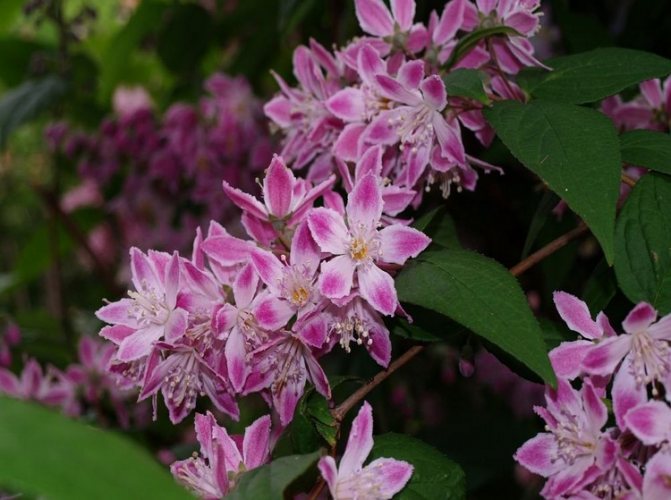

Propagation of action by cuttings
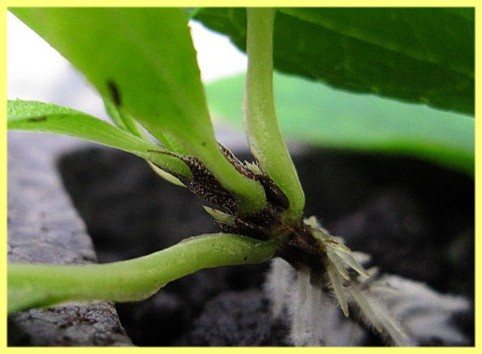

If you plan to plant a lot of plants on the site or make a composition, you will need several bushes. You can always buy Action, but it is more interesting to grow your young. Shrub propagation is carried out by cuttings. Action grows well from 100 shoots, about 90% are accepted.
In order to grow a plant, cuttings are taken from a young, strong bush. Shoots are cut about 30-50 cm long. Then each stalk must be dipped in a biostimulator and planted. For this purpose, "Heteroauxin" is used. The soil for the young should be fertile (50% river sand and 50% garden soil).
If you do not want to use a stimulant, pour Zircon or Guamat +7 on the ground, they promote the rapid development of the root system. The cuttings are planted a little at an angle, the depth is no more than 1 cm. The earth is crushed from above with sand, preferably river sand, by 3 centimeters.
Further, the container with young growth can be placed in the room on the windowsill or placed in a greenhouse. Keep plants out of direct sunlight. In general, Deutzia is well received and you will get good youngsters.
The container with plants must be covered with a special material, making a so-called greenhouse. The young will have to spend about a month in it. This is a crucial period for you, because the whole result of the work depends on the care of the cuttings.
After the roots are formed and the plant is accepted, the canvas for the greenhouse is removed, and Deytsia is not touched for several more weeks. Reduce water spraying during this period. You can plant a plant in open ground by forming a light greenhouse... For this, arcs are made and covered with agricultural canvas.
Plants need to be fed with mineral fertilizers and the soil should be mulched with straw or wood chips. This will help the young to survive the first winter. When snow appears, the plants are hidden in a snowdrift, it will provide additional insulation. In this form, the shrub lives until the first spring.
When the warmth comes, choose the strongest and highest quality plants. They should be planted in a place where they will constantly grow. Bushes that have grown frail and weak are thrown away.
Reproduction of Deytsia can be stiff shoots. To do this, they are cut in autumn, tied in a bundle and covered with sand. In the basement, cuttings are stored until spring, then they are planted in the ground in the same way as young shoots. Make sure that there are 3-4 buds on the shoots on each branch. Otherwise, the escape may not take place.
By dividing the bush, you can also get new plants. Choose a bush that has grown wide enough and you can see the side shoots bulging out. It is they who are dug up along with the roots. Then you need to immediately plant the young in the prepared soil.
The mother bush is pruned from old and bad branches. In general, it needs to be shortened by a third of its length. This way you get new plants and rejuvenate old shrubs.
Seed propagation of a shrub can also bear fruit. In order to grow young, seeds are harvested from Deytsia in the fall. They can be sown in prepared soil for the winter. There they will lie down and germinate in the spring. The planting site is mulched with sand and covered with leaves. To remember where you sowed the seeds, mark the area with a sign.
In the spring, when the snow melts, the area with seeds is covered with a special cloth and the humidity is periodically checked. The earth should not dry out completely. Saplings will appear soon, which can be planted where planned. Growing Action on your own is quite simple if you follow the technology. I don't want to mess with seedlings, buy ready-made bushes in the store.
How to plant an action
Planting action is carried out according to certain rules.Action should grow no closer than 250 cm from any other object, be it a building or another plant, since an adult bush takes up a lot of space. Dig a hole 40-50 cm deep, place there a drainage layer in the form of broken brick or sand, lower the roots of the seedling into the hole, then fill it with the soil mixture described in the previous section, to which you should also add 100-125 g of nitrophosphate. The root collar of the seedling should be at the level of the soil surface or 1-2 cm below the ground. After planting, the soil is tamped and watered, and the branches of the seedling are shortened to 3-5 buds on each shoot to stimulate tillering. The plot is mulched with a layer of peat 5 cm thick.
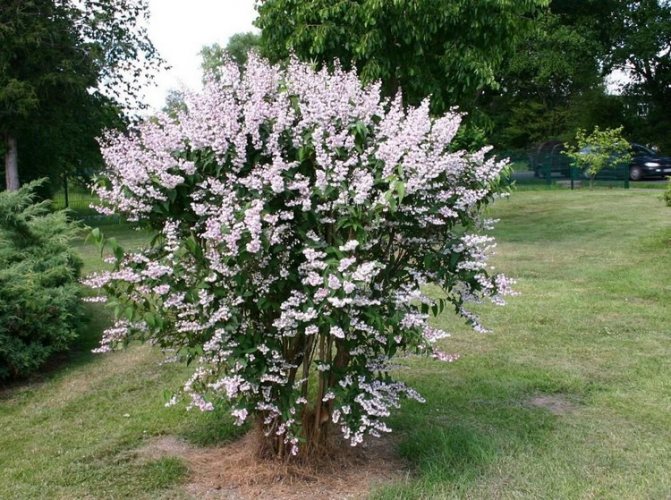

Pruning
Action shrubs respond well to pruning, which, if necessary, is carried out in early autumn and spring. Autumn treatment stimulates tillering and abundant flowering.
Timing and frequency of cutting topiary plants
The stems, on which there was flowering, are shortened by half or by a third, form a crown, depending on the desired size, thinned plantings are thinned out. Sanitary pruning in spring involves removing dry, weak, damaged and frozen shoots.
Over time, the bushes require rejuvenation. In this case, all branches are shortened almost to ground level. The procedure stimulates the growth of new basal (basal) shoots that develop rapidly.
Deytion transplant
The root system of deytions includes 1–2 large roots extending in depth, and many small fibrous roots. It is the latter that give the action the ability to cope well with the transplant. This procedure is carried out in the spring, for which the bush is carefully dug out, preserving the structure of the earthen coma if possible (the contour of the crown serves as a guide for the joint of the shovel with the ground). Before planting the plant with a lump in a new place, the soil of the planting pit is fertilized with a complex mineral fertilizer (20-30 g). It is especially important to take into account the location of the root collar when transplanting, so that it is not too deep and, at the same time, does not rise above the level of the soil cover.
Reproduction
Many types of action reproduce well by cuttings, even without the use of root stimulants. They also dig out root shoots or divide the bush during transplantation. By the way, the action perfectly tolerates the transplant.
And the surest way for amateur gardening is by rooting layers. To do this, in the summer, a twig is bent to the ground and fixed with a bracket. Then an earthen roller is poured, and the moisture of the earthen coma is maintained. In the spring, a young bush is cut off from the mother plant, and in the fall it is transplanted to a permanent place (with mandatory insulation for the winter).
Action care
Watering. Young plants need regular watering. As it grows, drought resistance increases. In the absence of precipitation, a bucket of water is poured under the bush weekly. After watering, it is recommended to loosen the soil. From autumn, irrigation is reduced, preparing the plants for wintering.
Fertilizer. In the spring, a solution of compost, ash and rotted manure is introduced under each bush. During the flowering period, fertilization is performed with a mineral complex twice more. Fertilizers are not needed later.
Pruning. To give the bush a shape, pruning is carried out. The plant tolerates this procedure very well. In the spring, frozen and dry branches are removed. Remove up to 25% of vegetation. When flowering is over, you can remove some of the young shoots and old branches for thinning. In the fall, molding pruning is carried out at the expense of young shoots. If you remove last year's branches, you can lose flowering next year.
Rough
Rough action, which is also called star-shaped, is an exotic beautiful bush that, before flowering, is very similar to a honeysuckle bush. In nature, the evergreen perennial is found in Japan and China.The height of the bush is relatively small, only two and a half meters, but it looks quite graceful. The bark is reddish, with a brown tinge; in older plants, it flakes off. The leaves are elongated, green without shine, their length is 3-8 cm, and the surface is rough.
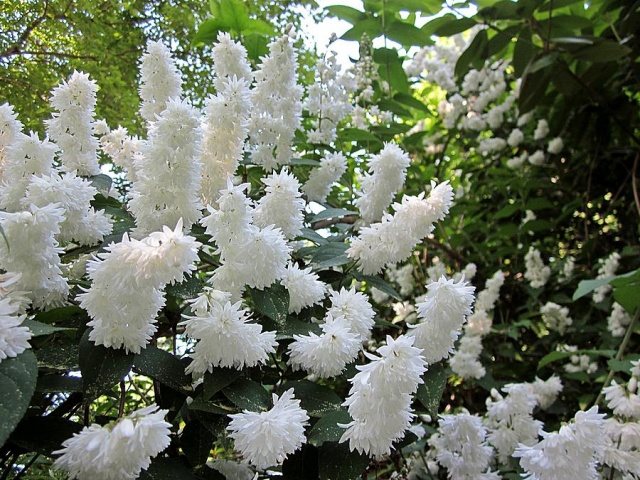

A representative of this species, deyci, blooms later than the rest. Inflorescences are pale pink or white, racemose, elongated and large. The length of the inflorescences, with good care, is 12 cm. The flowering duration is short - only ten to fourteen days.
The average life span of a shrub is 25 years.
The easiest way to plant the action is with a seedling. When buying it in the nursery, carefully examine it - whether all the buds are intact, whether there are visible damage on the branches, fungal plaque and other points that can provoke any disease.
Experienced gardeners recommend giving preference to seedlings, the root system of which can be examined. Their price is more affordable, and if the roots have dried up, it will not be difficult to notice.
Planting material cannot be stored for a long time, you will save the roots from drying out if you wrap them in strong wrapping paper.
The action should be planted in early spring. She will be comfortable in an open place, but so that in the afternoon the sun is not very bright here. Cold winds, drafts, like poor dry soils, can cause disease and death of the plant. Acidic soils need liming.
If necessary, you can bring the roots back to life by dropping the seedling into a bucket with a clay mash mixed with a weak solution of manganese, let them get wet in it for two to three hours.
The bush will be sprawling, so it will need a lot of space.
When planting, do not forget to lay drainage on the bottom of the hole and shorten the roots a little. The roots in the hole should not be cramped, dig it 50 cm deep.You will need humus, peat compost and sand, take them in a ratio of 2: 1: 2, mix, add a little nitroammophoska and fill the root in the hole with this mixture. Lift the root collar 1 cm above ground level. After that, the soil needs to be tamped, watered and mulched.
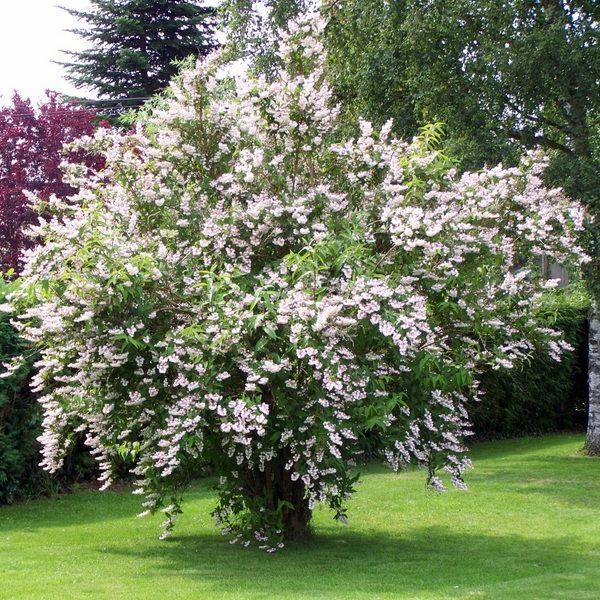

Taking care of an exotic beauty is not difficult. Watering should be regular, but not plentiful, once a week a bucket of water is poured under the bush, in a dry summer it can be two, by the end of summer watering should be gradually reduced. The earth needs to be loosened and weeded. Every month you need to make top dressing - liquid manure, and twice a summer - liquid mineral fertilizers, but only when the bush is blooming. You need to use drugs according to the instructions.
With proper care, diseases and pests are not scary to the bush. The bumblebee proboscis can be the cause of the biggest problems; you will learn about its presence by seeing the nibbled leaves. You can destroy it with karbofos.
Actions, especially in areas with cold winters, are sheltered in autumn, you can use the recommendations for sheltering hydrangeas.
Now let's say a few words about one more representative of the action family, this is the action of captivity.
Shelter action for the winter
Taking into account the fact that the action is a rather winter-hardy plant, by winter it should be covered with a light dry leaf, forming a layer of 10-20 cm. It will not be difficult to bend the shoots of low specimens to the ground, while with tall actions, the situation is more difficult. At the end of autumn, the bushes are tightly tied with a suitable breathable material (for example, synthetics used in sugar bags), while the leaves that have not yet fallen play the role of an additional cover. With this not labor-intensive method, almost complete preservation of the bushes is achieved even in frosts down to -30 C.
Action in landscape design
In group compositions, action is combined with hydrangeas, Syrian hibiscus, weigels. From mixborders with the participation of action and other ornamental shrubs, harmonious tiered transitions from open recreation areas to an orchard are obtained.


Action with white flowers in group plantings looks much more interesting than pink action.From a distance, the pink color visually acquires an ashy hue, an illusion of haze is created, which ultimately makes the composition seem to be dirty. Therefore, it is better for specimens with pink shades to select places closer to the point of view (for example, near intersections of paths or under windows).


Since the frost resistance of the shrub is low, it is unlikely that anyone will make a specimen planting or plantings in the form of a hedge from action. It's better to keep it in a mixborder. And if a harsh winter happens, it will be easier to wait for the renewal of the bush among other greenery than to look at the whole array of frozen hedges. In general, the lush growth of this gorgeous flowering shrub is for the Crimea or Tashkent, but for us it is still a risky (but oh-oh-very elegant) acquisition for a garden.


As you can see, not everything is so simple in planting and caring for action outdoors. And although there is a lot of planting material on the market, probably not all owners of this shrub have waited for flowering. Perhaps our recommendations for preparing for winter bushes of action and pruning them will partially remove the disappointment in growing them, and they will delight you with their charming flowering. Even if the action is gentle, planting and caring for it outdoors is worth the energy expended.
Description
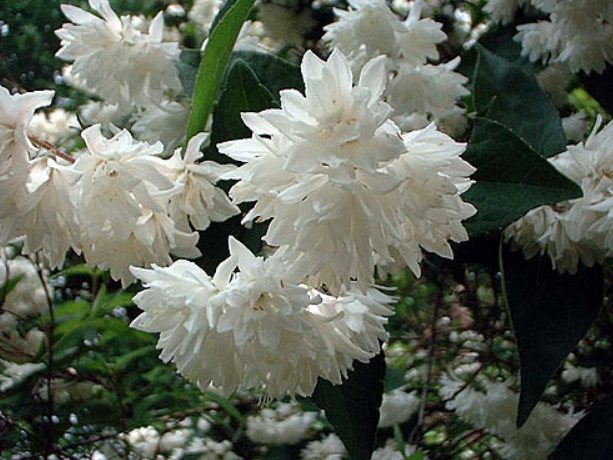

Deutzia is a deciduous shrub of the hydrangea family
- Name - The action is rough, rough or star-shaped (Latin Deutzia scabra Thunb).
- Natural habitat - Japan and China.
- First appeared in culture in 1822.
- The form - a low shrub up to 2 m high, with shoots gracefully bending under the weight of flowers.
- Leaves - dull green on both sides, yellow-brown in autumn, oblong-ovate, 3 - 8 cm, roughly pubescent. For rough leaves, densely covered with fine hairs, the plant acquired its name.
- Flowers - slightly pinkish or pure white, collected in narrow, erect, very beautiful racemes about 12 cm in length.
- Flowering period - end of June - mid-July.
- Very light-requiring but requires shading at peak solar activity.
- Loves fertile soil, loose, well-drained, with a neutral pH.
- Rough action - the most winter-hardy from actions, but in severe winters it can freeze to the level of snow. In case of freezing, it quickly recovers. It is preferable to cover for the winter, especially young plants, and plant in places protected from the winds.
- Action is listed in the Red Book and is under state protection.
Care
All actions aimed at stimulating the growth of the Asian shrub - watering and feeding - are carried out during the flowering period of the plant, which lasts an average of 30-60 days. Pruning and wrapping is considered preparing the plant for winter.
back to menu ↑
See also: Fast-growing perennial hedge: plant selection, planting, growing and care rules
Watering
Waterlogging has a detrimental effect on the condition of the shrub, therefore it is recommended to water it in moderation: no more than 10-12 liters of water under 1 bush every 2-3 weeks in the warm season. During the period of active growth and in dry weather, watering is allowed to be increased.
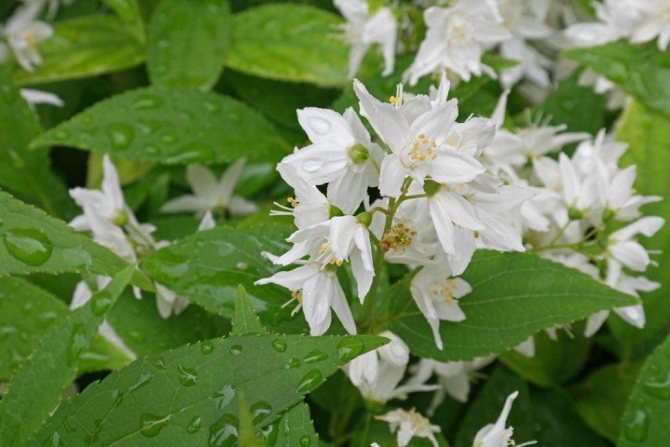

Watering the plants is stopped in August to ripen the wood
Already in the second half of August, watering the plant is stopped so that the wood ripens by the beginning of cold weather. In autumn, the near-trunk area is covered with a waterproof material.
It is recommended to loosen the soil under the bush after each watering, but only on the surface, so as not to hurt the root system. Weeds should also be removed by providing oxygen access to the upper root layers of the soil.
back to menu ↑
See also: Bubbles: species, description of 18 popular varieties, planting and care (80+ Photos & Videos) + Reviews
Top dressing
Fertilizer for action during the flowering period is applied monthly: the best choice will be liquid organic matter (no more than 3-4 liters). At least twice a season before the end of flowering, the plant is fed by introducing 130–150 grams into the soil. complex fertilizers consisting of a mixture of nitrogen, phosphate and potassium, or superphosphate.


You need to feed the shrub several times per season.
Mulching the trunk circle with humus at the rate of 4-5 liters per one bush will have a beneficial effect on the growth of action and its attractive appearance. In autumn, fertilizing a shrub can only do harm, because it leads to a decrease in winter hardiness.
back to menu ↑
See also: Garden azaleas: description, varieties, planting and care in the open field, preparation for wintering (50 Photos & Videos) + Reviews
Pruning
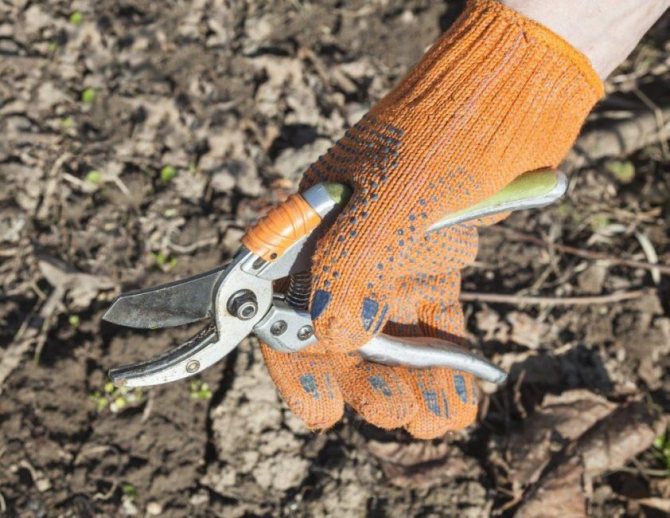

Trim shrubs with a sharp knife, pruning shears, or razor blade
The first pruning of dead shoots in winter during the season is carried out in May – early June. After the end of flowering, the plant is pruned for rejuvenation and crown formation - while it can be given any shape.
After flowering, each branch is pruned to a young shoot and another quarter of the length to properly lay the buds and increase bushiness.
Several shoots from old bushes are allowed to be removed every 2-3 years to ground level. Young shrubs 5 years old are also allowed to be cut strongly, leaving a 10-15 cm stump with two lateral shoots. But most often the bush is simply given a rounded shape, shortening the branches that are very prominent from the total mass.
back to menu ↑
See also: How to create beautiful flower beds and flower beds in the country with your own hands? (220 fresh photo and video ideas) + Reviews
Transfer
You can transplant the action only in the spring, otherwise the plant will not have time to get stronger before the cold weather. The plant should be dug out according to the diameter of the projection of its crown, trying to keep the earthen lump intact.
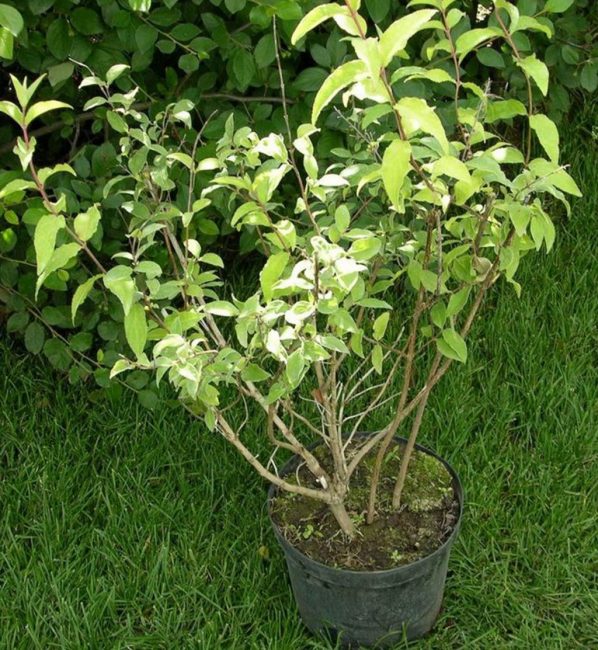

Young shrubs tolerate transplantation
The new planting pit should have a drainage layer and complex mineral fertilizing (no more than 25–30 gr.). You need to cover the shrub with the same mixture as when planting, then water it well, compact the soil under the plant and mulch with peat.
When transplanting, it is convenient to cut off dried shoots, shortening the branches by one third... A young plant tolerates a change of "place of residence" quite easily, an adult shrub can get sick.
back to menu ↑
See also: Spirea: description of 12 popular species, planting in the open ground, care, features for different climatic zones including Siberia (80+ Photos & Videos) + Reviews
Preparing for the winter period
For the winter, the plant is insulated twice: for the first time - after the onset of the first night frosts. It is necessary to press the shoots to the ground and make a small wooden frame, the surface of which is covered with fallen leaves - this is an air-dry shelter.
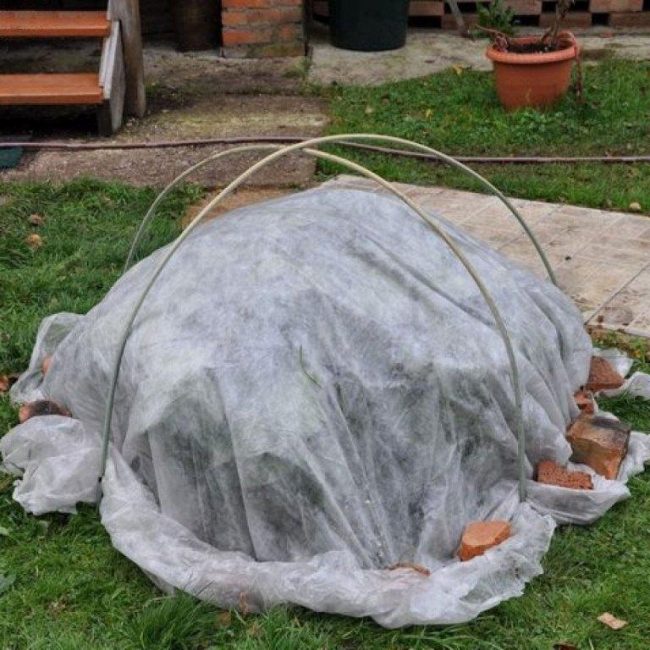

The air-dry shelter of the shrub will preserve the viability of the plant in the winter
The second stage of preparation for wintering is carried out when the average daily air temperature drops below zero. To protect the shrub from freezing, the lower massive branches of needles are placed on its base: this way the hollow shoots will not break from the snow masses.
You can additionally cover the shrub with non-woven fibrous material or film, which will help prevent branches from breaking under the pressure of snow and prevent the soil from crushing in spring.
It will not be possible to bent adult plants to the soil, they will simply break, therefore, to cover old bushes, you need to proceed as follows:
- Gently collect all the shoots in one sheaf, tie it with a soft rope.
- Put on a bag of lutrasil or spunbond with the closed bottom up.
- Fasten the material from below with clothespins and tie it in diameter with a soft tourniquet.
If the plant is not protected from the cold in time, then it will not bloom next spring.
It is recommended to remove the shelter in early spring, when the snow has melted, at positive average daily temperatures. It is necessary to free the plant without waiting for the remnants of the leaves to begin to rot.Also, the bushes should not be allowed to get wet.
If you do not get rid of the shelter in time (usually at the beginning of April), then this will slow down the process of spring vegetation of the shrub.
back to menu ↑
See also: Skumpia: description, types, planting in the open field, reproduction and care of ornamental shrubs (60 Photos & Videos) + Reviews
Landing in open ground
An ornamental shrub takes root well on the site if the grower takes into account the recommendations for choosing a place, the quality and composition of the soil, and the temperature regime in the region. It is important to consider how severe the winters are in a particular area in order to find a cold-resistant strain. It is necessary to clarify what kind of flowers: single or multiple, what splendor the inflorescences have, the shade of the petals.
Before planting, be sure to prepare the soil:
- dig up in autumn so that all the larvae of harmful insects are on the surface of the substrate and freeze over the winter;
- in the spring weeds must be removed;
- make compost or peat;
- dig up;
- loosen thoroughly, remove all large lumps;
- shortly before planting the bushes, it is useful to water the base with a strong solution of potassium permanganate or, for prevention, treat it with fungicides - compositions that destroy the fungus.
How to choose a seedling
Important aspects:
- pay attention to the general condition of the bush, check for damaged branches;
- special attention - traces of decay and disease on the leaf plates (on both sides) and the stem;
- it is useful to examine the root system, to find out if there are dry and rotten areas. For this reason, it is better to choose a shrub without a container so that there are no closed areas;
- the purchase of young plants is carried out shortly before planting, so that the plant does not stay outside its usual environment for a long time;
- after buying from the plant, the branches that broke during transportation are removed, the roots are shortened to about 40 cm. You can not cut the fibrous elements too much: the process of extracting useful substances from the soil will be significantly complicated;
- dried roots must be soaked for two to three hours in a solution of potassium permanganate of medium strength (1 l), added to the base - a clay chatterbox (1 bucket).
Landing dates
A highly decorative seedling with a closed root system is planted in a permanent place no later than June. It is important that the soil warms up well, frosts completely stop. The best option is to place young action bushes in the garden in early spring, while the buds are dormant. It is important to wait for the soil to thaw well. The stronger the seedling, the easier it is for the plant to adapt to the new site. It is important to properly prepare the soil before planting.
Location selection and lighting
A shrub with luxurious pink and white flowers does not tolerate dark corners of the garden. It is important that the scorching sun does not hit the delicate buds in the afternoon. You need to look for an area where you can combine rich light in the morning and light partial shade in the hottest part of the day.
Deytsia, like other plants (Cypress, Thuja, Barberry, Spirea), does not like drafts and windy areas. Ornamental shrubs are also not planted in the lowlands. A powerful combined root system makes it easier to obtain moisture from deep soil layers; action tolerates a temporary lack of soil moisture more easily than swampy conditions.
A suitable soil mixture is a combination of sand, humus (2 parts each) and peat compost (1 part). The substrate is nutritious and light. Good drainage is important: loamy, heavy soil is a poor basis for growing highly ornamental shrubs. To reduce the acidity of the soil, add 0.3 kg of slaked lime to each pit before planting the action.
Landing rules
Important recommendations:
- from the house, garden structures, fences or other plants on the site, it is imperative to retreat at least 2.5 m: the action is actively growing, the branches are spreading, drooping;
- first, they dig a hole of medium depth: about half a meter, arrange drainage from sand, expanded clay or pieces of broken brick;
- the seedling is carefully placed in a pit, the roots are straightened, carefully sprinkled with soil of a suitable composition, mixed with nitrophos (about 100 g);
- it is convenient to plant with an assistant: it is difficult to cope with the planting of a bush alone, the movements are constrained, there is a risk of damage to the branches;
- the root collar is buried no more than 2 cm or make sure that it is flush with the soil;
- thoroughly tamp the ground, water it moderately, after the soil dries up and lightly loosen it, the trunk circle is mulched with peat (layer - 4–6 cm).


Popular varieties
| 1. Captivity (lat.Plena), or terry Description:
The variety is sensitive to drying out of the soil. Most often used as a tapeworm on the lawn |
| 2. Candidissima (lat.Candidissima), or snow-white Description:
Looks great in single and group plantings, decorating the lower tier of tree plantings |
| 3. Pride of rochester (lat... Pride of Rochester) Description:
The variety is drought-resistant. Deytsia is grown as a tapeworm, in compositions, as hedges and borders. Resistant to urban environment and exhaust fumes |
| 4. Magnificent (lat. Deutzia x magnifica) Description:
The variety is resistant to urban smoke and gas, has several hybrid forms, widely used in gardening as tapeworms and in group plantings. |
| 5. Lemoine (lat. Deutzia x lemoinei Lemoine) Description:
Due to its vibrant autumn foliage, the variety is often grown in automnalias (autumn flower gardens). |
Rough action - wintering
With the arrival of autumn, it is necessary to attend to the preparation of the plant for frost. The action shrub has rough winter hardiness, good, quite suitable for the climate of the middle zone. All the same, so that the plant does not freeze, it must be prepared for cold weather and snow. Preparing for winter:
- At the end of summer, watering is stopped.
- In September, it is necessary to cover the soil around the bush with a waterproof material.
- When the temperature drops below 10 ° C at night, the branches must be bent to the surface of the earth and fixed with brackets. Some varieties can be easily damaged by mechanical action, for example, the rough action "Whitish", so they are not touched.
- When the daily temperature drops to 0 ° C, shoots on the soil surface are insulated with fallen leaves, dry needles, sawdust.
- Small bushes can be covered with spruce branches, which will protect the plant from snow.
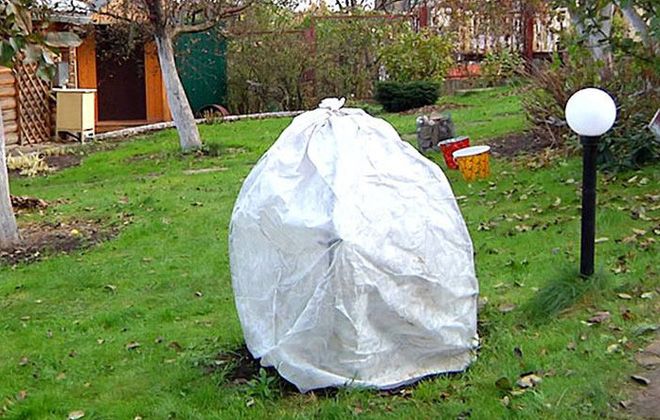

Common varieties
A huge number of developed varieties of action allows you to create an original, memorable garden design. Some shrub varieties are suitable for fencing.
The action is slim.
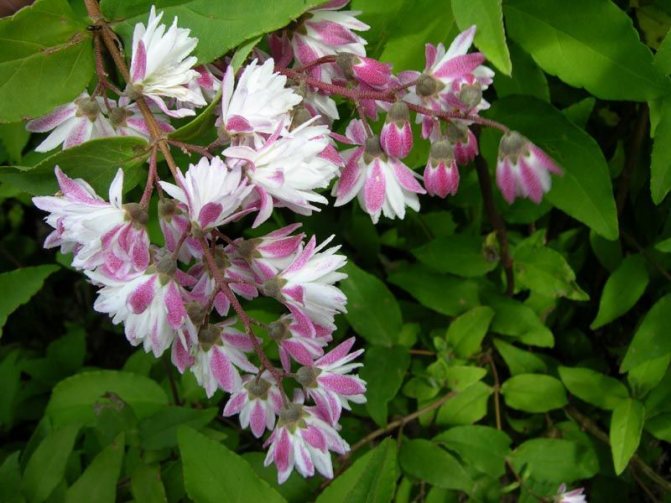

In the wild, this variety grows on mountain slopes in Japan and northern China. This variety is highly resistant to climatic conditions. Slender action is able to survive prolonged drought and sudden cold snaps. The bushes of action are slender or, moreover, graceful, have a beautiful, compact, rounded shape. This variety is perfect for creating sculptures. With proper care, the bushes can grow up to one and a half meters in height. Above, the elongated foliage of the action is slender hairy, and the bottom is smooth. In summer, the leaves are juicy green in color, and in autumn they turn yellow. The action blooms slender with snow-white flowers at the end of May. Duration of flowering is about one month.
Action Pink Pom Pom.


Through the labor of the selectors, a truly unique variety of action was bred - Pink Pom Pom. The flowers of the variety are pink, double, and numerous. The foliage is rough, dark green in color. The variety has a long flowering period that can last all summer.
The action is hybrid. This variety is obtained as a result of crossing the graceful and Amur deytsia varieties. The shrub can reach a height of 2 meters with good care. It blooms with snow-white flowers in July. The leaves are dark green in color, rough, turn red in autumn. This variety is characterized by cold hardiness.
Action: types and varieties for open ground


The beautifully flowering shrub has been cultivated since the mid-19th century. About fifty species of garden plants and wild varieties are known. Deciduous shrubs grow up to one and a half to two meters. There are frost-resistant species, but most varieties do not tolerate frost well, require shelter for the winter or growing in warm regions. Subject to the growing conditions and proper autumn care, the species takes root perfectly in the Middle Lane.


Important characteristics of the plant:
- the homeland of action is the countries of East Asia, the Himalayas region, Mexico;
- leaves are ellipsoid or ovate, dark green, with petioles, the shade of the leaf plates differs from the top and bottom;
- inflorescences consist of terry or semi-double elements;
- shades of petals: white, pinkish-white, less often - only pink;
- long shoots under the weight of buds and leaves gradually bend, beautiful arcs are formed;
- in some species, the bark changes with age to reddish-brown or gray. Young shoots woody by autumn;
- in the second year, a hollow hole appears inside the shoots, the flexibility of the branches is significantly reduced. This nuance is taken into account when preparing plants for winter, when all branches need to be bent and fixed near the ground.In adult shrubs, the shoots do not bend down, but are tied with twine and then wrapped in protective material;
- unusual root system: a combination of two central rods with small, multiple fibrous elements in the upper part of the base;
- the shrub is unpretentious, tolerates transplantation well, multiplies easily with the help of cuttings and cuttings;
- action is often planted in gardens, near institutions, schools, shopping centers, in the country, wherever there is enough space: bushes grow, flexible branches deviate from the center. An adult bush reaches a width of 2 m or more.
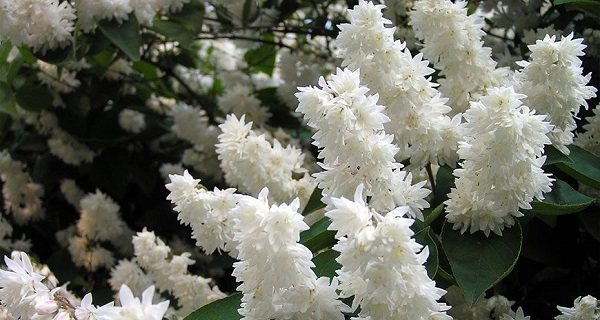

In gardens, action is often grown:
- Rough or Gorodchaty.
- Long-leaved.
- Amurskaya.
- Graceful.
- Large-flowered.


Action photo cropping
Caring for such a plant includes regular pruning. The action should be cut twice per season - in spring and autumn. In autumn, the branches blooming this year should be cut to the base or to the first strong bud. You should also remove old branches and those due to which the crown thickens. Together with sanitary pruning, crown shaping is also done. In springtime, you need to shorten those branches that are frozen, and also remove the injured ones. In the event that the bush has suffered very badly during the winter, and more than half of its branches are broken, then it is recommended to cut such a plant "on a stump". Anti-aging pruning is done in the same way.
Features of the action


The bush of such a plant can be erect or spreading. Its height varies from 0.4 to 4 meters. The leaf plates are oppositely positioned. The bush is outwardly very similar to honeysuckle until flowering begins. Flowers open on last year's shoots. A large number of pink or white flowers that do not have a scent open on the bush. They are part of the apical inflorescences in the form of a brush. The lifespan of the action is approximately 25 years. The fruit is a capsule.
Action Facts
It is a low, about 1.5 m, deciduous shrub from the Hortensia family. A characteristic feature of action, characteristic of many hydrangeas, is the flaking of the bark. If you look closely, you can see gray-brown shoots with thin sheets of bark hanging in "rags" under the white lace of flowers. This is a normal property of mature shoots, and not traces of a disease or pest.
In the garden, the action looks good, for example, in a conspicuous place with evergreen rhododendron and terry kerria. They all bloom at the same time, and the action creates a neutral white transition between lilac and yellow flowers. In landscape design, a combination of action with decorative conifers is often used, and hedges are formed from tall varieties. Action is not afraid of exhaust gases, so it can be planted as a fence in areas adjacent to the road.


Reproduction in culture
Action propagates by green and lignified cuttings, cuttings, root suckers, bush division, and seeds.
They start cutting green cuttings in June. Only large, well-developed shoots in a mature state are suitable for cuttings; they are cut off early in the morning. The stalk should be 10-15 cm long and have two internodes, large leaf blades are cut in half. The upper cut is made above the kidney, the lower cut obliquely. To accelerate root formation, you can use the root, dusting the lower end of the cutting with it. The box or flowerpot is filled with light nutrient soil, half mixed with river sand. A layer of sand 2-3 cm thick is poured on top. The cuttings are planted slightly obliquely, deepening into the ground by 0.5 cm. The boxes are placed in hotbeds and greenhouses, covered with plastic wrap. During the rooting period, cuttings need diffused light and high humidity, created, for example, by a fogging device or frequent spraying of plants. Before the cuttings are taken out into the garden, they are gradually hardened.To do this, the film is removed for a short time, then the frames of the greenhouse are opened slightly at night, and in cloudy weather even during the day. Rooted plants can be transferred to the ground, but in the first winter they need to be covered with a leaf or spruce branches. And in the spring they are planted for growing. Action can be propagated by lignified cuttings. Shoots are harvested during the dormant period of the plant, in late autumn. Cuttings are cut 15 - 25 cm long with three or five buds. They are collected in bunches of 10-15 pieces, tied up and placed in wet sand, falling asleep almost completely. In this form, they are stored in basements until spring at temperatures close to zero. In the spring they are planted and raised like green cuttings.
In early spring or autumn, during the period of leaf fall, a heavily overgrown shrub is dug up and divided, together with the root system, into 2-3 parts, or the root suckers are separated. At the same time, old thickened branches are cut off. The planting material is not allowed to dry out and is planted in a new place as soon as possible.
Small seeds of action are sown superficially, lightly sprinkling with sand and pressing tightly with glass. During the period of seed germination, the soil is regularly watered, 2-3 times a day, using a watering can with a fine mesh or a sprayer, and make sure that the seeds are always covered. Seedlings appear in 1.5 months
Seedlings with developed leaves carefully dive into open ground
Photo by the author, Valeria Ilyina (rough action) and Elena Illesh (photo at the beginning).
Back to Plants Encyclopedia
Shrub variety selection
In order to refine your summer cottage or spice up the area near a luxurious mansion, you need to decide on the choice of the plant variety required, according to the idea. We will briefly introduce you to the most popular species of this shrub, which has successfully taken root in our climatic zone.
Rough
The name Rough Deytsia got because of its ovoid leaves, which are completely covered with small hairs up to 2.5 mm long. The shrub blooms late, from June to July. The second, popular, name - Star-shaped Deytsiya rough acquired due to its flowers in the form of peculiar stars. To understand what is at stake, take a look at the photo. It should be noted that this species is one of the thermophilic ones. Therefore, it is recommended for planting in the southern regions of the country.
Mrs. Shershavaya winters well in the conditions of Moscow and the Moscow region, but quite often she is damaged by frost, which is why she requires the creation of a special shelter for the winter. Sh
Graceful
The second name of this species is Graceful. Take a look at the photo and see how right those who called her were right. The shrub blooms in the month of May. Particularly good are its flowers, which are collected in inflorescences up to 10 cm long. The graceful one differs from its relatives by its unsurpassed flowering. Quite often, flower growers use it for early distillation. In winter, Graceful Deytsia needs a good shelter, or a thick snow cover. The bush reaches a height of no more than 2 meters. It is worth noting that the shrub has excellent winter hardiness.
Gorgeous
Quite often it is called Lush. Like many popular species, she is a hybrid. The flowering of the bush falls on the month of June. The magnificent one is able to endure the winter without creating a special shelter. However, only in regions where winters are not too cold. In this species, annual shoots always freeze over and die. Therefore, only the protection of the plant from frost can guarantee abundant flowering.
Deytsia Gorgeous flower growers fell in love because of its unique flowers, collected in massive umbrella panicles.
This concludes our review of varieties. However, on the territory of Russia, Deytsia of such species as:
- Fields;
- Pink;
- Terry;
- Strawberry;
- Hybrid.
The Turbilon Rouge variety deserves special attention.
This shrub attracts the attention of flower growers with incredibly beautiful flowers that resemble the traditions of Ancient China. Even the legendary man Christian Dior used bits of the Turbilon Rouge charm in his model collections.
Diseases and pests
Action demonstrates high resistance to garden pests and diseases. This plant compares favorably with most of its more vulnerable counterparts.
If a proboscis (a butterfly of the moth family) starts in the garden, the action can get sick. The insect infects the leaves and branches of the plant. To get rid of the pest, you need to treat the garden with an insecticidal preparation such as Karbofos.


If a proboscis (a butterfly of the moth family) starts in the garden, the action can get sick
Pests and diseases
The rough action has immunity to most diseases of horticultural crops, so it does not need preventive treatments. Of the insects, the greatest threat to the shrub is the bumblebee or bumblebee proboscis. The caterpillars of the bumblebee are able to eat a large number of leaves from the plant in the shortest possible time, so you should not delay the treatment of the bush - as soon as possible after the detection of insects, the action is sprayed with insecticides. Among them, the most effective against parasites are the following:
- "Karbofos";
- "Decis";
- Lepidocid-BTU;
- 15% Phthalofos solution.
Description of the plant
Crown the plant consists of erect shoots, smooth or pubescent.
Leaves opposite, simple, with irregular jagged or serrated edges.
Bark usually not coarse, only exfoliates in old plants and can acquire a rigid structure.
Escapes hollow inside already starting from the second year of life of the bush.
Root system usually consists of several central powerful rods and numerous short fibrous roots located in the upper half of the root. This structure provides drought tolerance and ease of transplanting.


The flowers of many plant varieties are bell-shaped.
Flowers simple or double of 5 petals, collected in spherical large apical inflorescences of white or all shades of pink, red, purple. The plant does not have a pronounced aroma. Fetus - a small spherical box with seeds inside.
In nature, shrubs can be compact and grow up to 40 cm, but most often an adult plant reaches 150-200 cm. Some individuals become real giants up to 4 m high. The average life span is 20-25 years.
Varieties of action from Japan and the Himalayas were introduced to Europe in the middle of the 19th century, and at the end of the century, Chinese species of shrubs appeared in the gardens and estates of gardeners from the Old World.
The origin of the name, according to some theories, is associated with the name of a merchant from the Netherlands and the mayor of Amsterdam, Johann van Deitz. In the 18th century, he financed an expedition of Dutch scientists to Japan, where they first met this species. The plant was named in honor of the patron by the botanist Karl Peter Thunberg, but the people often call the action an Asian or oriental beauty.
back to menu ↑
See also: Euonymus: Description of the plant, species and varieties, cultivation, planting in the open ground and care, reproduction (65+ Photos & Videos) + Reviews
Autumn care, shelter and wintering
After ripening (in the month of September), if necessary, collect dense seeds of a yellowish-brown hue. The procedure is rarely carried out: basically, the action is propagated in a vegetative way. The collected planting material is well dried, put in paper bags, stored in a room where there is no dampness and maintain a moderate temperature.
Action does not tolerate the cold season, and without shelter, young shoots can freeze out. At the end of autumn, before the onset of frost, flexible branches are gently bent to the ground, fixed, covered with spruce branches.For young plants, it is useful to create an additional layer of fallen leaves, and only then cover the bushes with spruce branches. Before wintering, some gardeners cover the young ornamental shrub with modern agromaterial that retains heat, but lets air through.
In mature plants, it is not easy to bend branches to the ground without damaging the hollow shoots. Experienced flower growers advise wrapping heavily overgrown specimens with lutrasil, spunbod or burlap. At first, the branches are carefully collected together, not very tightly tied with twine, and only after that a protective "cocoon" of agromaterials is created. The use of modern coatings creates an optimal environment inside the shell, the kidneys do not rot from air deficiency.
Features of planting a plant
The successful cultivation of a shrub is impossible if there are mistakes at the stage of its planting. They will not allow the plant to fully develop and bloom beautifully, since all forces will be spent on survival in adverse conditions.
How to choose a seedling?
You need to buy planting material only in a safe place.
The shoots of the plant should be free of damage and signs of any disease.
The root system of the shrub must be protected from drying out with a clay mash or burlap. If it is necessary to transport seedlings far away, only those that have a closed root system should be selected.
If, after transportation, the plant has suffered a little, then the broken shoots are cut off and the wounds are rubbed with activated carbon. You should not plant a bush with damage, as this will only weaken it and worsen its survival rate.


Which place to choose?
Deytsia belongs to light-loving crops and cannot grow in partial shade or shade. The place where it will be planted must be protected from strong winds. Soil moisture is needed average, stagnant water has a detrimental effect on the shrub.
Ideally, the plant feels on loose ground with a slightly alkaline reaction. When planting shrubs near the walls of the house, take into account that water flowing from the roof should not fall on it.
The least whimsical is the pink deytion, as it is able to tolerate light partial shade.
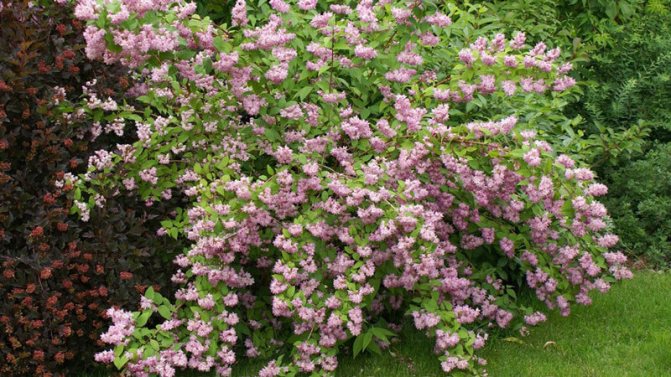

Landing
The shrub should be planted in the spring, so that by winter it has time to fully take root. For the plant, a hole is dug 50 cm deep and 20-30 cm wide in diameter than the root system of the seedling.
A 10 cm thick drainage layer of crushed brick or expanded clay is poured onto the bottom. Next, the soil is poured 15 cm, the plant is installed and its roots are covered.
They must first be straightened so that the roots do not twist and can quickly begin to fully develop. It is unacceptable to deepen the root collar. It must remain flush with the ground.
The ideal soil for filling the planting pit will be a composition of 2 parts of humus and sand and 1 part of peat compost.
Some gardeners also recommend adding 100 g of nitrophoska to the composition. Official agricultural technology does not provide for this.

